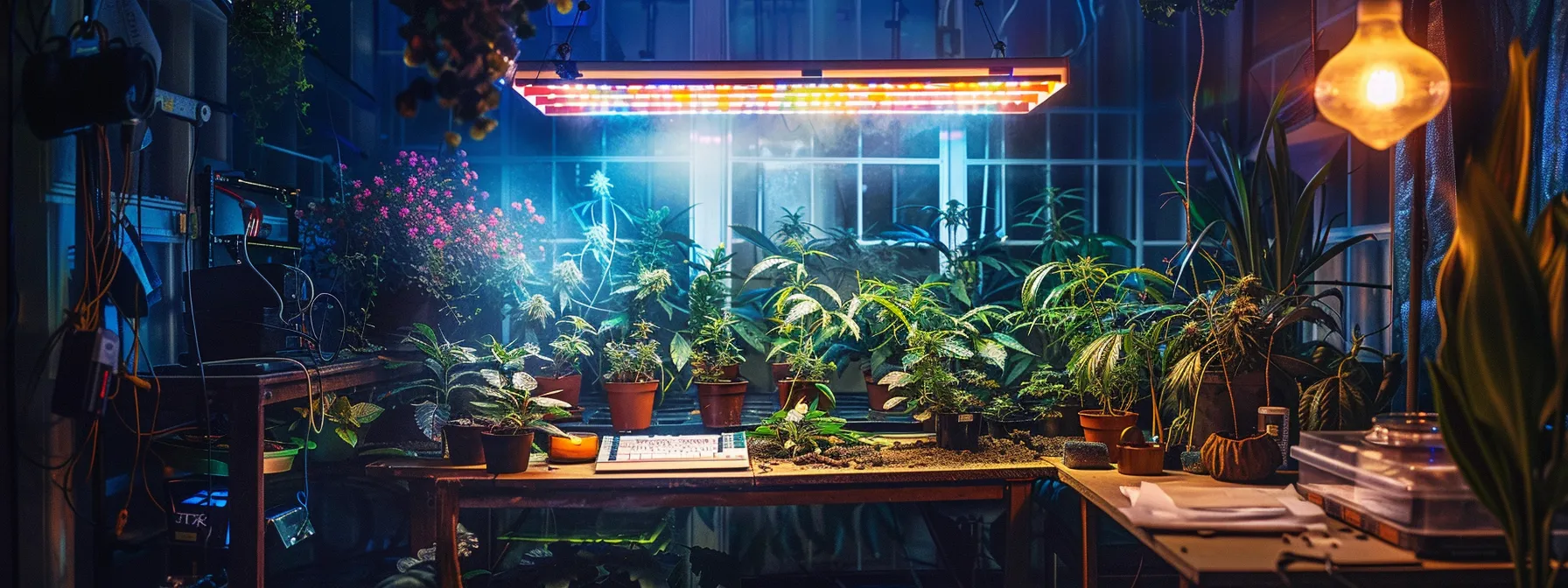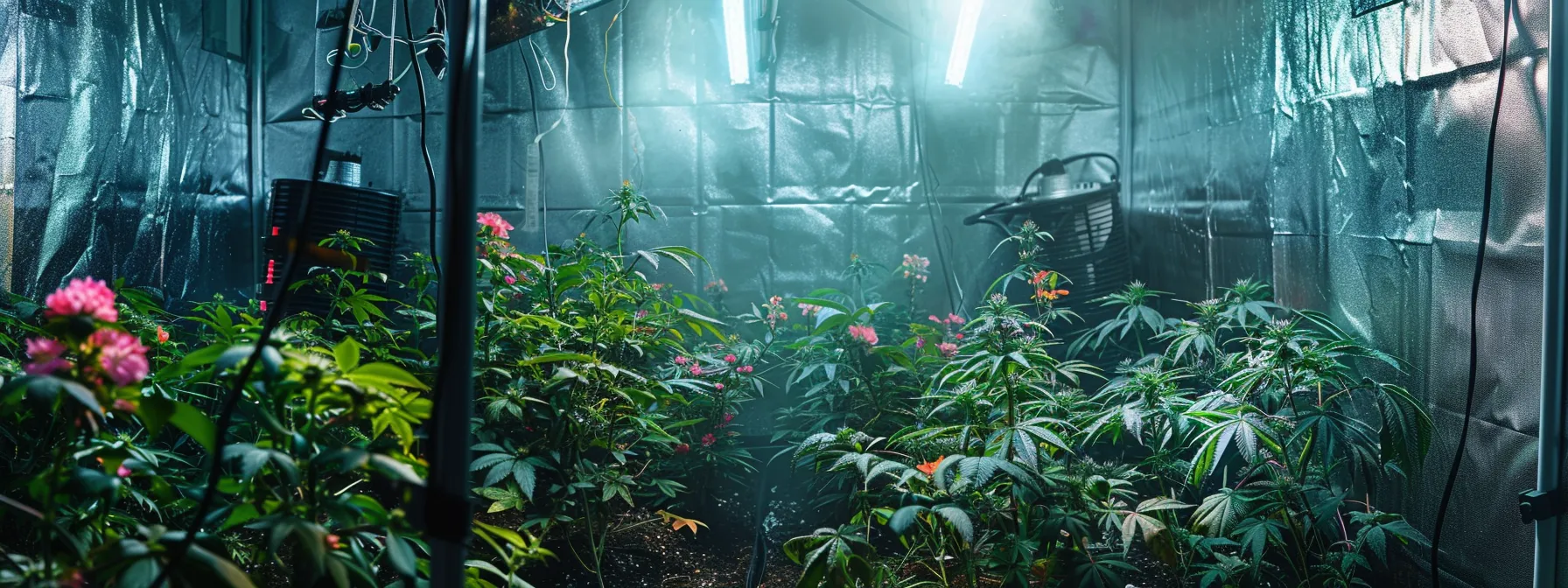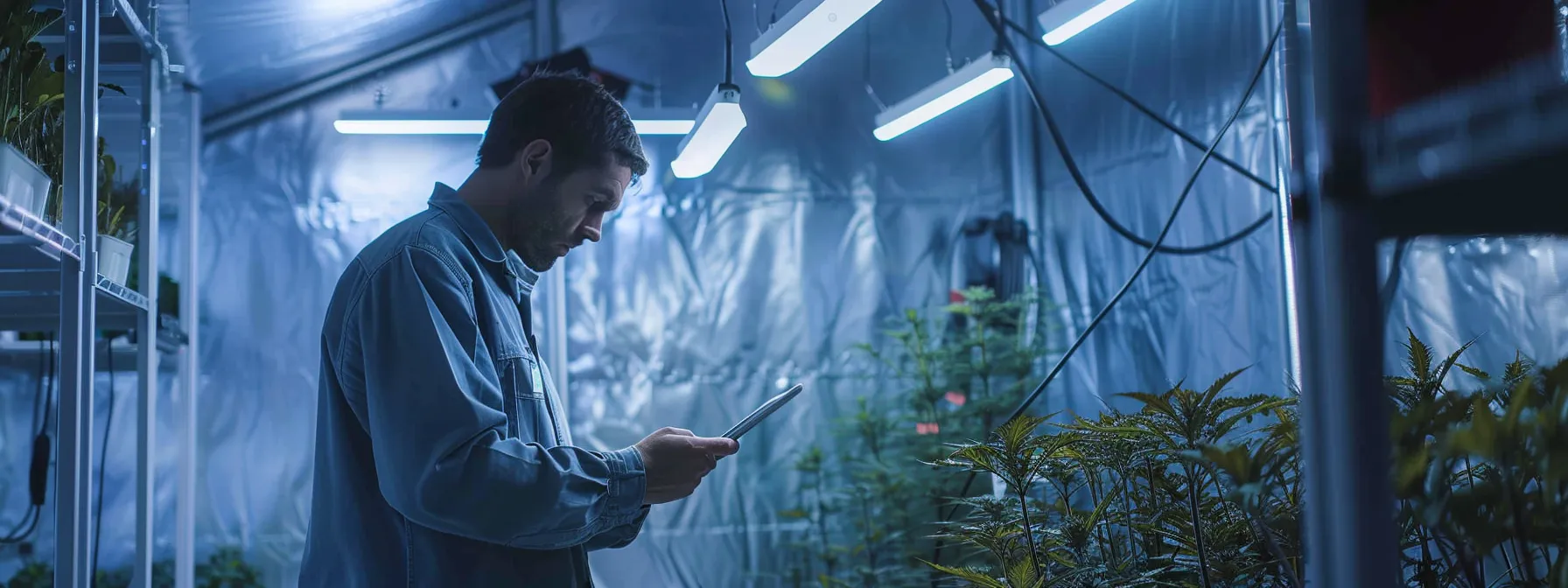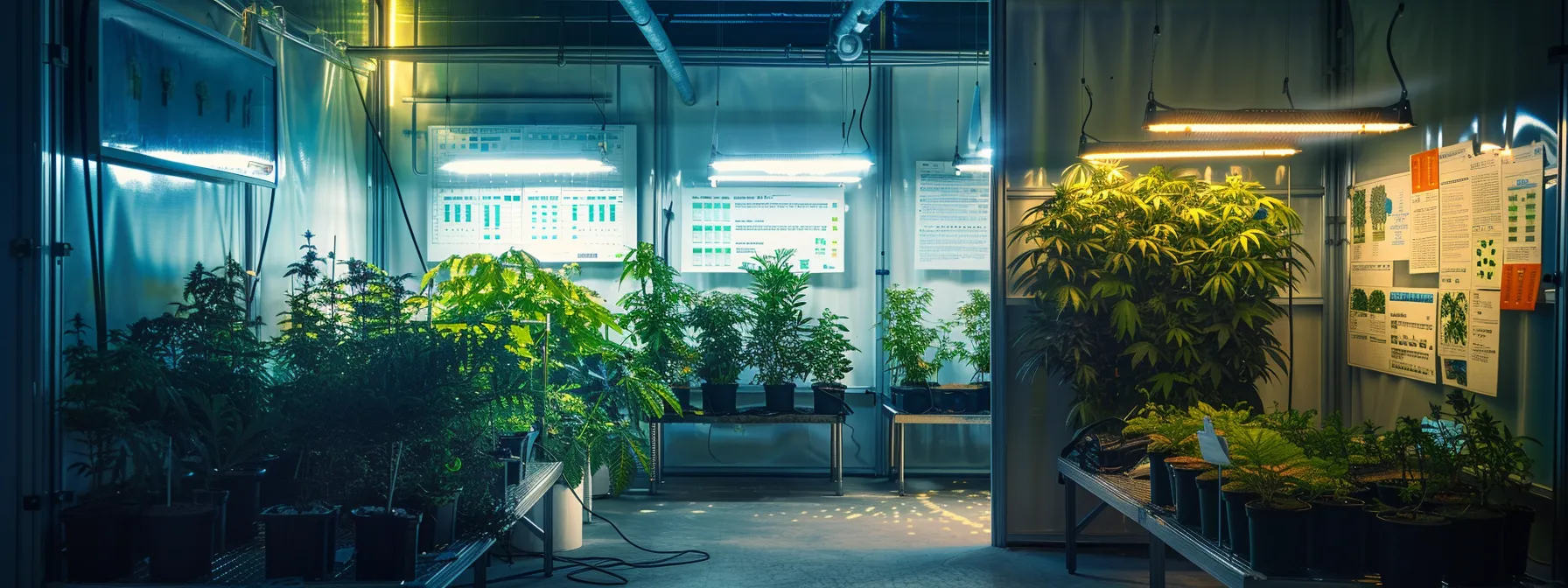Many growers make errors when using marijuana grow tents that lead to lost yield and poor quality plants. The post covers how to prevent mold in weed tents, address ventilation problems, and spot common missteps. Readers will learn practical fixes to boost plant health and productivity. This guide helps users solve issues that often result in wasted resources and frustration.
Key Takeaways
- proper tent size supports optimum airflow and temperature control
- tailored lighting improves plant health at each growth stage
- consistent ventilation prevents mold and maintains air quality
- routine cleaning and maintenance reduce pest and disease risks
Common Mistakes to Avoid When Using Marijuana Grow Tents

This section reviews common grow tent errors such as using a tent of improper size, neglecting light needs at each growth stage, poor ventilation, insufficient upkeep, and inadequate temperature or humidity tracking. The article details using tools like a hygrometer and considers watt requirements and deep water culture methods, ensuring that horticulture enthusiasts gain real experience.
Choosing the Wrong Size Tent for Your Grow Space
Choosing the wrong size tent can lead to issues with intake, heat management, and drainage; an undersized space may restrict airflow and increase the risk of mold while an oversized tent might reduce the effectiveness of essential features found in the Best Grow Tents for Cannabis:
| Issue | Impact |
|---|---|
| Inadequate Intake | Limits oxygen and fresh air circulation |
| Excess Heat | Creates an environment prone to mold growth |
| Poor Drainage | Leads to water accumulation and system malfunction |
Proper sizing ensures that the grow tent meets the practical demands of the cultivation process, maintaining optimal levels for intake and heat control while preventing drainage issues that cause mold. Utilizing a tent that aligns with specific cultivation needs allows practitioners to achieve better results when using Best Grow Tents for Cannabis, addressing common pitfalls with a reliable setup.
Ignoring Light Requirements for Different Growth Stages
Proper attention to light requirements is crucial, as neglecting varying needs during growth stages can affect energy efficiency and ventilation performance. Experts suggest that adjusting light intensity and spectrum significantly impacts plant health, especially when using plastic fixtures and hepa filters in controlled environments.
Practitioners who adapt the lighting setup to each phase of growth witness improved overall conditions and smoother transitions between stages. Routine adjustments help maintain optimal energy levels and ensure that the ventilation system, along with hepa and plastic components, works seamlessly to support plant health throughout the growth cycle.
Overlooking Ventilation Needs and Airflow
The importance of proper ventilation in a grow tent room cannot be overstated when preventing mildew buildup and ensuring a healthy cultivation environment. Experienced growers recommend gathering data on airflow patterns to maintain steady circulation while securing personal data from marketing efforts that rely on cultivation successes for better industry insights.
Studies show that maintaining consistent ventilation levels improves plant development and reduces the risk of mildew, a common challenge in enclosed spaces. Professionals advise monitoring room conditions using reliable data tools, which can simplify troubleshooting and bolster marketing claims through verified outcomes and documented personal data.
Neglecting Regular Maintenance and Cleanliness
Neglecting regular maintenance can lead to persistent odor issues that hinder the efficiency of marijuana grow tents, with activated carbon filters deteriorating over time and losing their effectiveness in air purification. Experts note that careful upkeep prevents the buildup of penicillium, ensuring that the cultivation environment remains clean and secure, and that any payment for maintenance supplies reflects a worthwhile exchange rate for reliable performance.
Failure to maintain cleanliness invites challenges that impact both plant health and operational integrity, with reduced airflow causing the growth of contaminants like penicillium and affecting odor control systems. Professionals maintain that routine cleaning and timely replacement of activated carbon filters help manage these issues, ensuring that payment for quality upkeep remains justified by improved outcomes and a stable exchange rate in maintenance costs.
Failing to Monitor Temperature and Humidity Levels
Failing to check temperature and humidity levels in a marijuana grow tent risks plant stress and adverse growing conditions. In this setup, proper monitoring of factors such as perlite moisture in the greenhouse environment and maintaining a clean duct system is critical to prevent issues that could result in plant damage.
Regular monitoring ensures that temperature and humidity remain within optimum ranges, reducing potential threats to overall plant health. Establishing a reliable routine that includes cleaning with a mild bleach solution when necessary helps maintain an effective duct system and creates a supportive growing environment for every plant.
How to Avoid Mold in Weed Tents

Understanding mold causes, maintaining effective humidity control, and ensuring proper airflow is key for optimal plant development. Using a fan to move air, managing transpiration, and preventing smoke build-up create conditions favorable for healthy growth. Regular cleaning and mildew-resistant treatments further enhance the tent's environment.
Understanding the Causes of Mold Growth
The risk of indoor mold increases when conditions such as improper canopy configurations and low height settings restrict the effective use of passive ventilation systems. Industry experts note that proper advertising of setup standards and monitoring of environmental factors are critical to reducing mold formation in marijuana grow tents.
Correct deployment of ventilation and awareness of space dimensions contribute to mold prevention in grow spaces. Professionals recommend adhering to specific canopy and height guidelines while employing passive ventilation to keep mold levels low and maintain optimal plant health.
Employing Effective Humidity Control Strategies
Practitioners emphasize the importance of using a dehumidifier to control moisture levels within the grow tent, ensuring that the accumulation of organic matter and dust does not lead to mold formation. Professionals recommend regular maintenance of the reservoir and ensuring that any warranty-covered equipment is in good working order to sustain effective humidity control measures.
Experts suggest monitoring humidity levels closely and adjusting controls as needed to prevent mold risks. They advise incorporating a reliable dehumidifier system while minimizing the buildup of dust and organic matter, which can interfere with the overall efficiency of the setup and compromise the warranty on critical system components.
Ensuring Proper Airflow to Prevent Stagnation
Maintaining proper airflow in a marijuana grow tent is essential to avoid conditions that favor mold development. Experts note that ensuring a good exchange per cubic foot of space helps regulate the ph balance while discouraging spider mite infestations in hybrid setups designed for optimal soundproofing and climate control.
Effective airflow management can be achieved by using ventilation fans and adjusting the tent's structure to maximize air circulation. This approach not only mitigates stagnation but also supports a stable environment where factors such as soundproofing enhancements and cubic foot measurements play a key role in controlling both mold and spider mite issues during hybrid cultivation.
Implementing Regular Cleaning Routines
A professional cultivator maintains regular cleaning routines to boost efficiency and prevent mold growth in marijuana grow tents, using a secure password to lock down equipment settings and protect sensitive data; ensuring surfaces are free of ice residue further supports reliability in the setup and keeps operational standards high:
| Task | Benefit |
|---|---|
| Regular Cleaning | Prevents mold growth and improves efficiency |
| Equipment Check | Ensures proper functionality and secure password management |
| Moisture Removal | Avoids ice buildup and supports a stable environment |
A diligent cultivator uses cleaning routines as a practical tool to control mold growth in weed tents, paying careful attention to details like monitoring ice remnants and updating password systems to protect data; this approach simplifies maintenance and aligns with the overall goal of increasing the efficiency of the cultivation process.
Using Mildew-Resistant Materials and Treatments
Experts advise selecting materials treated with a reliable fungicide to minimize the risk of mold grow in marijuana grow tents. Utilizing analytics in material selection ensures that setups remain robust against common pest issues such as insect infestations while supporting a smoother harvest process.
Practical experience highlights the value of integrating mildew-resistant materials in cultivation spaces to guard against mold build-up. Industry professionals recommend routine treatments and close observation of performance metrics to keep the grow environment optimized and secure, ultimately protecting the quality of the harvest.
Addressing Grow Tent Ventilation Issues

The section details how to identify common ventilation errors and install effective equipment. It covers balancing intake and exhaust fans, troubleshooting airflow problems, and maintaining CO2 levels vital for plant nutrition. Professionals review data, tracking every root for issues like infestation, ensuring experts never take their eye off crucial details, as noted in every newsletter.
Identifying Common Ventilation Errors
Professionals find that poor ventilation can raise the risk of fusarium contamination and affect air quality, potentially impacting lung health. Identifying issues such as blocked airflow, uneven distribution, and legal non-compliance in the grow space is crucial for cultivating a safe environment:
| Error | Impact |
|---|---|
| Blocked Airflow | Increases fusarium risk and affects lung health |
| Uneven Air Distribution | Creates unstable conditions in the space |
| Legal Non-compliance | May lead to penalties under law |
Experienced practitioners recommend regular checks of ventilation systems to ensure proper air exchange and to address common issues such as inadequate intake that compromises the legal operation of the grow space. Consistent monitoring of the space using basic tools assists in minimizing the risk of mold and improves overall plant health.
Installing the Right Equipment for Effective Air Exchange
The proper installation of equipment minimizes contamination risks while ensuring efficient air exchange in a marijuana grow tent. Experts focus on using devices like evaporative coolers that regulate temperature and maintain low bacteria levels to protect potting soil and overall plant health.
Industry professionals recommend a careful setup of intake and exhaust fans to create a balanced environment that reduces airborne contaminants and avoids operational issues such as a malfunctioning cart during material handling. This approach supports an effective air exchange strategy while safeguarding the growing space from factors that can lead to serious plant challenges.
Balancing Intake and Exhaust Fans for Optimal Performance
Balancing intake and exhaust fans plays a crucial role in maintaining a stable environment in marijuana grow tents, as it minimizes the risk of pathogen buildup and supports optimal humidity levels. Professionals recommend using a sensor to monitor airflow and electricity usage, ensuring that adjustments are made promptly to create a balanced garden-like environment while integrating pest management practices.
Experts advise that achieving the proper balance between intake and exhaust fans improves plant health and reduces the likelihood of indoor air issues; a practical setup includes the following elements:
- Using sensors to track environmental changes
- Ensuring reliable electricity flow
- Implementing integrated pest management strategies
- Maintaining efficient airflow similar to a well-kept garden
This method offers actionable insights that aid cultivators by providing measurable improvements in air quality and plant vigor.
Troubleshooting Airflow Problems
Professionals note that troubleshooting airflow problems in marijuana grow tents often begins with checking wind flow and monitoring humidity levels to ensure a balanced environment. They recommend using simple tools and even household solutions like vinegar for cleaning ducts and filters, a tip frequently mentioned on bestmarijuanaguide.com to maintain effective ventilation and reduce ozone buildup.
Experts observe that identifying issues with ventilation typically involves measuring wind consistency across the tent and verifying that humidity levels remain within an optimal range. They emphasize that a methodical approach, including regular maintenance and data tracking as highlighted on bestmarijuanaguide.com, significantly reduces the risk of performance issues and plant stress.
Maintaining CO2 Levels for Plant Health
Maintaining balanced CO2 levels is vital as experts note that an efficient exhaust system, paired with a reliable pump, ensures that vapor pressure remains stable and reduces the risk of powdery mildew. Professionals emphasize the importance of a well-calibrated thermostat to actively regulate temperatures while supporting optimal CO2 absorption for healthy plant development.
Practitioners observe that monitoring CO2 using a dependable exhaust system and integrating a pump into the setup delivers consistent environmental control, preventing powdery mildew outbreaks. Industry specialists recommend steady adjustment of the thermostat to sustain the right vapor pressure, yielding significant improvements in plant growth and overall yield quality.
Identifying and Solving Common Grow Tent Problems

This section highlights essential practices for grow tent management. Professionals emphasize recognizing plant stress, assessing nutrient imbalances, addressing pest and disease issues, and adapting to environmental shifts like rain and carbon fluctuations. They also advise monitoring hydrogen levels, leaf hygiene, and record details to drive continuous improvement in cultivation outcomes.
Recognizing Signs of Stress in Plants
Regular inspection of plants helps cultivators identify early signs of stress, such as discolored leaves and stunted growth, which can indicate issues with oxygen levels and an unbalanced climate. Professionals note that these symptoms often coincide with outbreaks of pests or an unexpected rise in yeast activity, both of which require prompt attention.
Expert growers advise that monitoring plant responses provides actionable insights that guide maintenance decisions in the grow tent. Detailed inspection routines, coupled with adjustments to climate control systems, help ensure that optimal oxygen levels are maintained and potential pest infestations or yeast anomalies are addressed swiftly.
Assessing Nutrient Deficiencies and Excesses
Professionals recommend using hydrogen peroxide to treat solutions and examine nutrient levels, as adjusting the volume of water and fertilizer can reveal significant shifts in the nutrition curve. Expert feedback from seasoned growers indicates that erratic nutrient delivery might lead to weak plant development and potential root rot, prompting the need for close observation of plant responses.
Industry practitioners suggest regular evaluations of nutrient formulas to identify whether feedback from plant performance aligns with the expected growth curve. Observations that deviations in volume adjustments are linked to deficiencies or excesses can help pinpoint early signs of nutrient imbalance and prevent conditions that may trigger root rot.
Troubleshooting Pests and Disease Issues
Experienced cultivators note that pests and disease issues can disrupt the crop due to excess moisture and poor maintenance practices; troubleshooting efforts should include clear steps and appropriate measures such as using an air purifier to mitigate airborne contaminants and integrating simple javascript tracking tools to record environmental readings and pest activity:
| Factor | Impact |
|---|---|
| Moisture Control | Prevents mold and pest infestations |
| Crop Health | Maintains robust plant development |
| Maintenance Routine | Reduces risk of recurring disease issues |
| Air Purifier | Enhances air quality and reduces contaminants |
| JavaScript Tools | Streamlines monitoring and data collection |
Industry professionals recommend that troubleshooting of pests and disease issues include a comprehensive review of maintenance schedules and environmental conditions; implementing regular checks and using modern tools such as javascript data trackers together with air purifier systems ensures that each crop receives proper care and necessary moisture control is maintained to prevent further complications.
Adapting to Environmental Changes
Professional cultivators adjust to environmental changes by regularly modifying their formula for nutrient delivery, ensuring that each plant receives balanced nutrition amidst fluctuating humidity and temperature conditions. They monitor carbon dioxide levels and oil residue, fine-tuning the setup to counter pressure variations that could affect overall plant growth.
Experienced experts emphasize that adapting to external shifts requires a proactive review of the nutrient formula and system pressure. They utilize reliable data to maintain stable carbon dioxide levels and oil quality, confirming that optimal nutrition practices are in place during periods of environmental change.
Keeping Detailed Records for Continuous Improvement
Maintaining detailed records proves valuable in avoiding common errors with marijuana grow tents, as it enables cultivators to track light schedules, bud development, and water levels effectively. Detailed logs support recognizing changes in species performance while guiding decisions on using a humidifier, ensuring every adjustment is informed by past outcomes.
Thorough documentation offers actionable insights that help address potential cultivation problems quickly, making it easier to review light intensity modifications and water delivery methods. Practical records assist in observing bud growth patterns and species responses, allowing practitioners to optimize the use of a humidifier and improve overall tent management efficiency.
Frequently Asked Questions
What are common errors in setting up marijuana grow tents?
Inexperienced growers often overlook proper ventilation, lighting adjustments, humidity control, and temperature regulation, potentially affecting cannabis yield and product quality.
How does mold develop in weed tents?
Mold develops in weed tents when high moisture and poor airflow create damp conditions, allowing fungal spores to settle and multiply. Proper ventilation and humidity control help reduce the risk of mold in cannabis storage areas.
What causes poor ventilation in grow tents?
Poor ventilation in grow tents stems from limited airflow due to blocked intake or exhaust vents and improper fan placement, which causes a buildup of heat and moisture that interferes with ideal conditions for cannabis cultivation.
How can ventilation problems be fixed in grow tents?
Fix ventilation issues in grow tents by cleaning and adjusting fans, ducts, and filters; reposition intake and exhaust ports to ensure steady airflow, or upgrade faulty components as needed.
What methods solve common problems in marijuana grow tents?
Efficient ventilation and precise humidity control in grow tents reduce mold and pest infestations. Optimized lighting and temperature management support proper plant development, ensuring robust cannabis growth.
Conclusion
Marijuana grow tent management demands attention to essential operational factors that ensure sustained plant health. Cultivators must properly size the tent and fine-tune light settings to align with each growth stage, ensuring efficient energy use and robust airflow. Maintaining cleanliness, monitoring temperature and humidity, and applying mold-prevention strategies sustain an optimal cultivation environment. Effective implementation of these measures equips growers with the tools to produce healthier crops and overcome common setup challenges.


